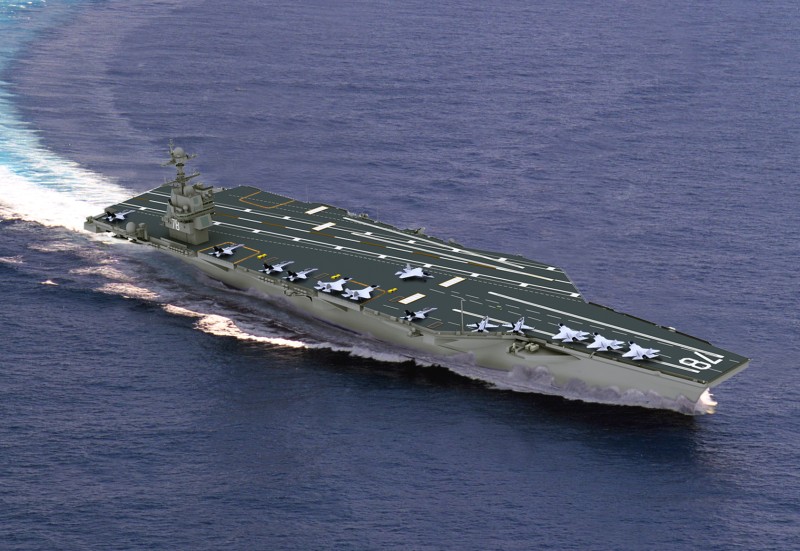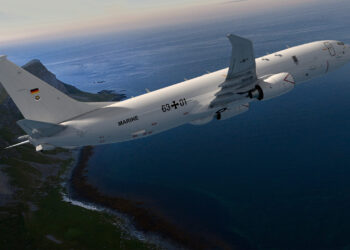Since 2006, CBO has performed an independent analysis of the Navy’s annual long-term shipbuilding plan at the request of the House Armed Services Committee. The latest in that series, a CBO report released today summarizes the ship inventory goals and purchases described in the Navy’s 2012 plan and assesses their implications for the Navy’s funding needs and ship inventories through 2041.
CBO’s Key Findings
The Navy currently envisions buying a total of 275 ships during the next 30 years at an average annual cost of about $15.5 billion (in 2011 dollars) for new construction alone, totaling $465 billion over 30 years (about 6 percent less than its estimate for the 2011 plan). Those figures are solely for the construction of new ships, the only type of costs reported in the Navy’s 30-year shipbuilding plans. Total shipbuilding costs—which include new construction, refueling of nuclear-powered aircraft carriers, and some other items—would average about $17.3 billion per year.
By comparison, using its own models and assumptions, CBO estimates that the cost for new-ship construction under the 2012 plan would average about $18.0 billion per year, or a total of $539 billion through 2041, about 16 percent more than the Navy estimates. Including the expense of refueling aircraft carriers as well as outfitting new ships raises that average to about $19.8 billion per year.
The total costs of carrying out the Navy’s 2012 plan, in CBO’s estimation, would be less than those for the 2011 plan, but they would still be much higher than the funding that the Navy has received in the past—about $15.6 billion a year on average over the past 30 years.
CBO’s Analysis
Through 2011, at the direction of the Congress, the Department of the Navy issued annual reports that described its plans for ship construction over the coming 30 years. Recently relieved of that annual requirement, the Navy described its intentions for shipbuilding in stages, through documents that can be combined with one another and with the plan of the previous year to yield a new 30-year plan comparable to earlier ones. CBO used that plan as the basis of its study.
CBO’s analysis provides further insight into the Navy’s shipbuilding plans. Specifically:
- The Navy’s documents constituting its 2012 shipbuilding plan pertain to the service’s battle force: aircraft carriers, submarines, surface combatants, amphibious warfare ships, and some logistics and support ships. Those documents present the service’s inventory goals for various categories of ships in the battle force, and generally the goals take effect immediately, although for large surface combatants the goal is for 2024 and beyond. In cases where the goals are higher than in previous years, it is understood that they cannot be satisfied for a number of years (if ever) because ship construction is staggered and each ship takes several years to build. The Navy’s 2012 plan implies that the service’s current goal for its inventory of battle force ships is 328—up from 322 or 323 under the 2011 plan (that plan was unclear as to whether the inventory goal for carriers was 10 or 11) and 313 in the Navy’s three previous long-term plans. The battle force fleet currently numbers 286 ships.
- Under the 2012 plan, the Navy would buy 205 combat ships and 70 logistics and support ships, totaling 275 ships over the 2012–2041 period. Given the rate at which the Navy plans to retire ships from the fleet, that construction plan is insufficient to achieve a 328-ship fleet. However, the fleet would number at least 313 ships—within 15 of the goal—for a nine-year period starting in 2019.
- The difference between CBO’s estimate and the Navy’s estimate of the costs for new-ship construction in the 2012 shipbuilding plan—about 16 percent overall—varies considerably over time: CBO’s estimates are 7 percent higher than the Navy’s for the first 10 years of the plan, 10 percent higher for the following decade, and 31 percent higher for the final 10 years of the plan. Those differences result partly from different estimating methods and different assumptions about the designs and capabilities of future ships.
- If the Navy receives the same amount of funding (adjusted for inflation) for ship construction in the next 30 years as it has over the past three decades, it will not be able to afford all of the purchases in the 2012 plan. CBO’s estimate of the full cost of the Navy’s 2012 shipbuilding plan is about 27 percent above the average funding that the Navy has received over the past three decades.










